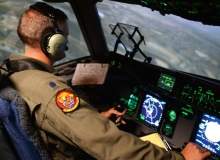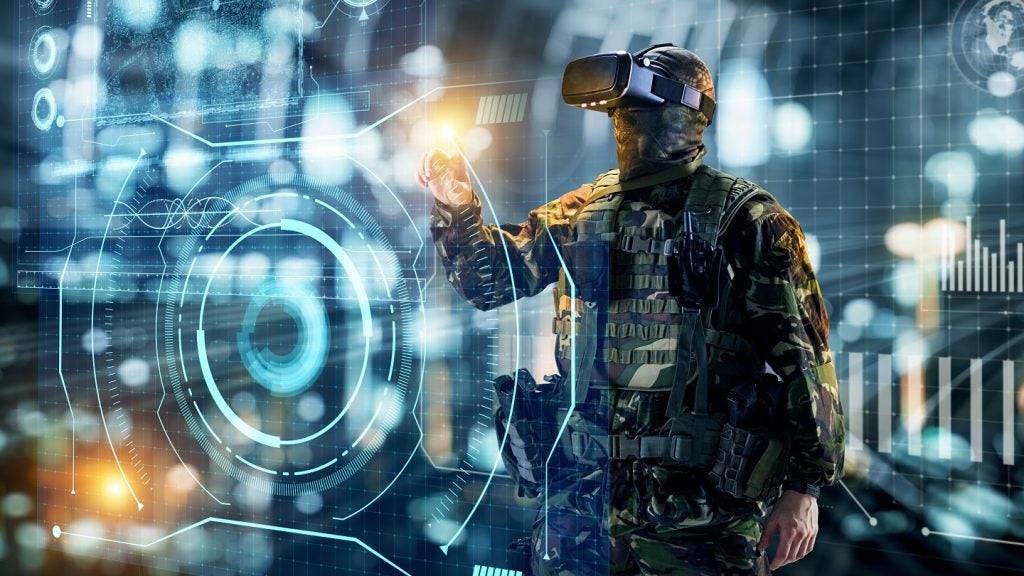

In December 2013, US defence company Northrop Grumman announced it had carried out a unique virtual aerial refuelling demonstration. The virtual mission, involving a C-17 Globemaster and a KC-135 tanker, was the first-ever to utilise networked simulators to link up geographically dispersed aircrew.
All simulated platforms worked together as if on a real-life mission, replicating the often complex and multi-dimensional aspects of operations. The connected crews could even use standard visual references, radio communications and the tactical air navigation system – everything an airman would encounter in the real world.
The demonstration used a C-17 simulator in Texas, a KC-135 tanker simulator in Florida and a boom operator simulator in Oklahoma, connected via the Mobility Air Force Distributed Mission Operations test network, a programme led by Northrop Grumman.
After the demonstration US Air Force Major Erick Brough, the C-17 simulator pilot, commented: "It is hard to believe the boom operator is not just 50 feet away from you, but that he is two states away. There were no delays; the mission was real-time and very realistic."
Budget cuts affecting pilot flight hours
Improving the simulator experience is part of the US Air Force’s attempts to reduce costly real-world flying hours without affecting pilot and aircrew readiness for combat. Ongoing budget cuts in the US have drastically cut the amount of time a pilot spends up in the air.
How well do you really know your competitors?
Access the most comprehensive Company Profiles on the market, powered by GlobalData. Save hours of research. Gain competitive edge.

Thank you!
Your download email will arrive shortly
Not ready to buy yet? Download a free sample
We are confident about the unique quality of our Company Profiles. However, we want you to make the most beneficial decision for your business, so we offer a free sample that you can download by submitting the below form
By GlobalDataA Typhoon display pilot takes visitors on a training mission through the breathtaking scenery of North Wales and the Lake District.
On average, an air force pilot flew around 120 training hours in 2013, while that figure was more than double a generation ago. In December 2013, military officials warned that US pilots now have fewer training hours than their Indian and Chinese counterparts.
With concerns growing over the quality of training for its airmen, the US Air Force is relying on the increasing sophistication of distributed, networked simulators to fill the training gap caused by fiscal cuts. This means simulators now have to replicate real-world battlespaces which are often highly complex and interconnected.
As operations in Iraq, Afghanistan and Libya have shown, US forces have to link up across several domains – including air, land, sea and space – and also work alongside personnel from other nations such as the UK and Canada. Newer, more advanced networked simulators are giving commanders the opportunity to replicate this in a virtual environment.
The US Air Force’s main centre for connecting simulators across distributed networks is the Distributed Mission Operations Center (DMOC), based at Kirklands Air Force Base. Four times a year, the DOMC runs an exercise called Virtual Flag which simulates real-world aerial war games such as the Red Flag series of exercises.
With the latest simulation technology being employed, Virtual Flag can incorporate personnel from the US, Canada, Australia, the UK and many more countries. In September 2013, a Royal Air Force E-3D AWACS crew participated in a Virtual Flag exercise providing vital airborne warning assets to coalition forces, all without leaving their RAF base in the UK.
Simulating an entire war
It is hoped that as technology matures, allied forces will be able to rehearse an entire war in the virtual arena using personnel from across the services. This not only gives pilots, soldiers and sailors an edge in combat but also means senior commanders can test their plans and doctrines before putting them into practice. It will add a significantly advanced dimension to traditional war gaming practiced by commanders.
"This is the future," said Flight Lieutenant Craige Curry, an E-3D Tactical Director. "With the reduction in air forces across the world we rarely get the opportunity to train to this sort of level in the real environment. So training in a synthetic environment with so many different entities gives us an excellent insight to how future warfare would develop."
The simulation allows aircrew to experience major combat operations and large force deployments, something which is almost impossible to replicate regularly in peacetime. That means aircrew can suffer from significant ‘skill fade’ – meaning an airman becomes less proficient in his/her task – so being able to frequently practice major drills in a cost-efficient way is seen as a vital asset.
British defence giant BAE Systems is also developing simulation systems which can be networked into wider battlespace scenarios. Last October, the company carried out the UK’s first-ever live training simulation connecting Typhoon pilots at RAF Leuchars in Scotland with other air and maritime assets across four different UK sites.
Using a high bandwidth dedicated engineering network, four Typhoons conducted a virtual swing role mission with assistance from an E-3D Sentry emulator in New Malden and a Type 45 destroyer simulator at the BAE Systems Broad Oak site. Senior officials from all three services were able to view the unfolding mission from a viewing centre at the company’s site in Warton, where the Typhoon is manufactured.
The Typhoon and Type 45 simulators were fully concurrent with the latest operational standards for both platforms, making it the first joint-simulator training demonstration in Europe where the systems are concurrent with frontline operational platforms.
Simulation vs. real flying: is networking the answer?
Newly released documents show the US is set to spend billions of dollars on a new generation of stealth bombers.
There is concern among some in the military, however, that no matter how advanced simulators become, they will never be able to fully replace the experiences of real-world flying. Pilots have to build up airmanship skills which can only be learnt in real aircraft and that often involves long hours carrying out tedious tasks such as administration, navigating bad weather and talking with air traffic control.
Simulators also lack the so-called ‘danger factor’ and participants are sometimes complacent as there is no danger of dying if you make a mistake. Another negative side of simulation is the lack of motion and G-forces experienced, which in real life would have a massive effect on crew performance.
"We know you can’t simulate the genuine danger of flying, which is why there will always be flying," Alan Murdoch, head of air and ground training at BAE Systems said recently in the company’s corporate magazine. "There’s the airmanship debate too. You need to appreciate the stress of real flying."
BAE Systems is planning further trials of its networked simulators over the next 18 months which will include the addition of other air, sea and land simulation facilities.
There’s clearly a debate to be had on just how much simulation is a good thing. Commanders in the UK and US are constantly assessing the mix of synthetic training and real-world flying for their pilots and other personnel. But as more advanced networked simulation technologies come online and the training benefits become clearer, it may be easier for people to embrace this technology revolution.
Follow Grant Turnbull on Google+


.gif)



